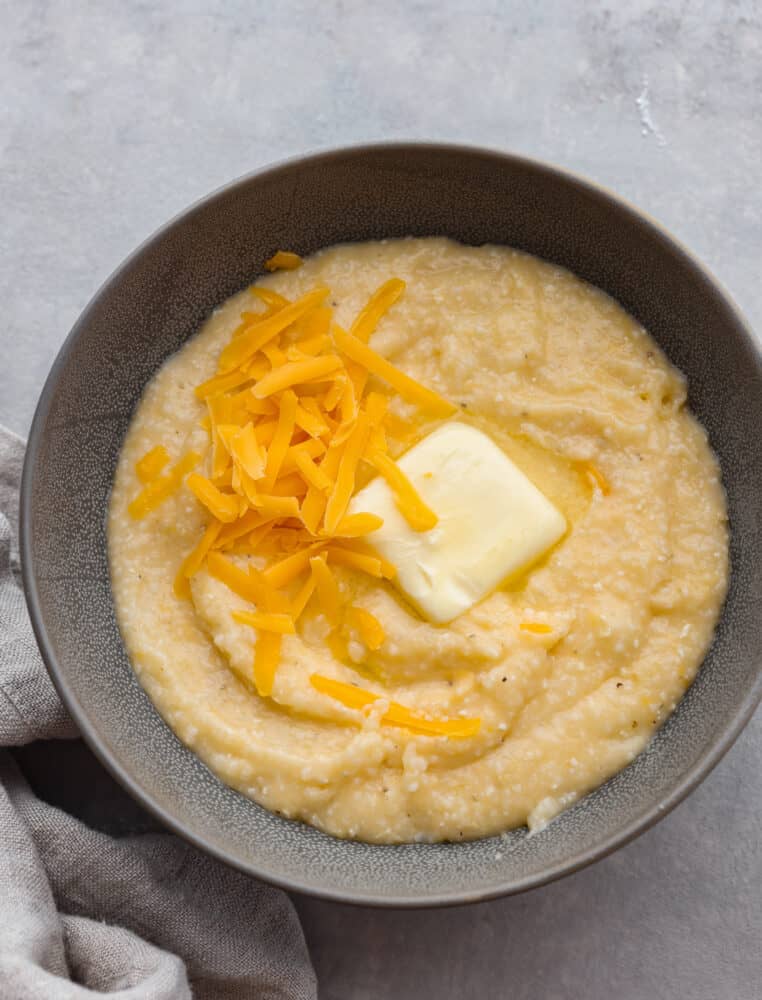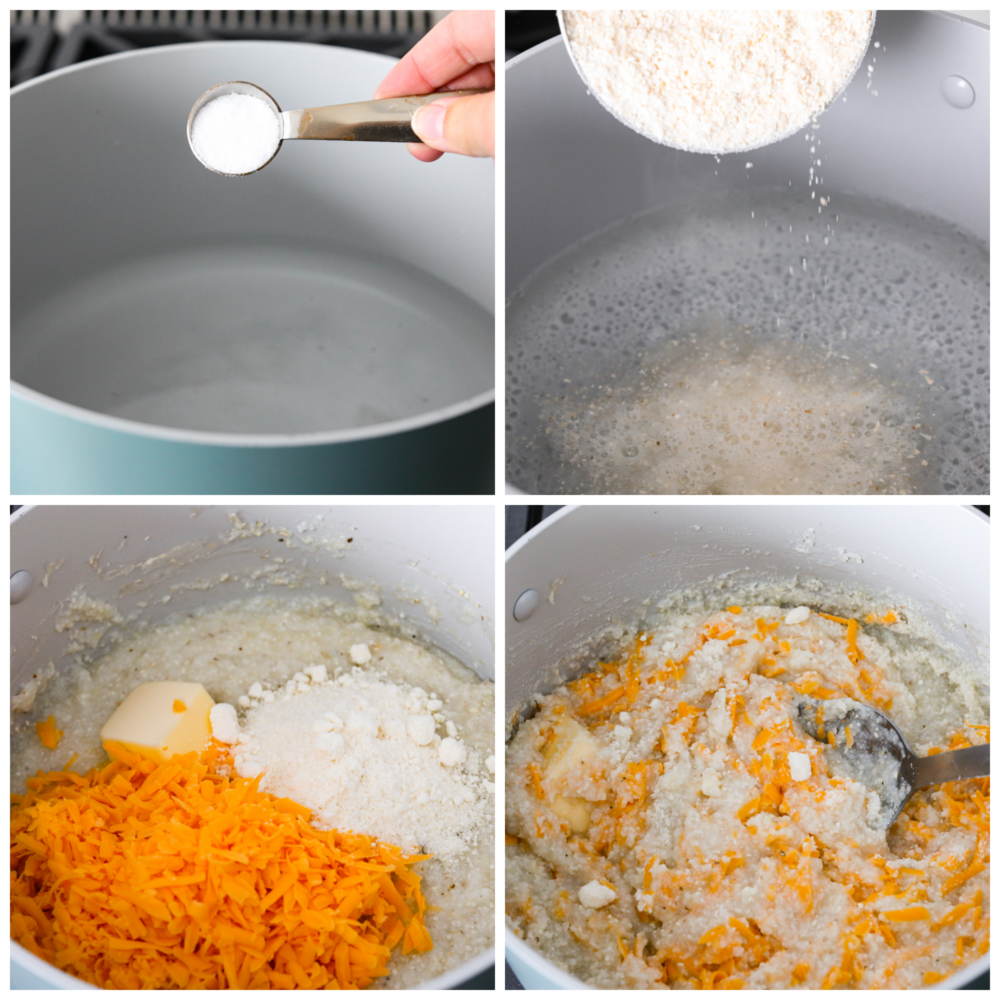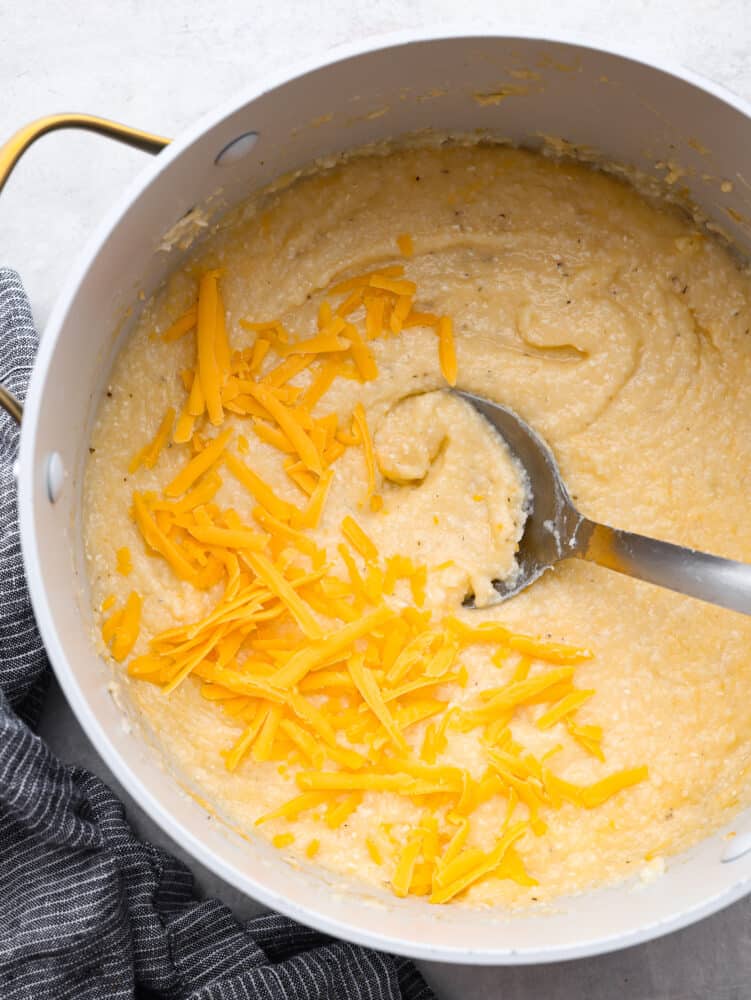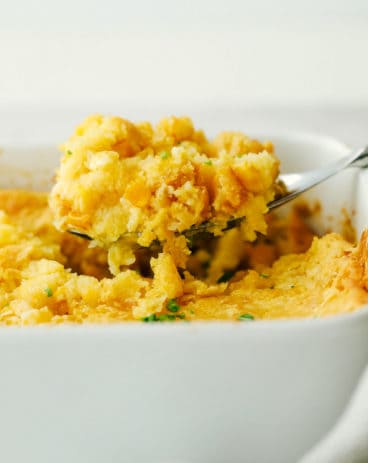Creamy and comforting cheese grits are a classic Southern dish. The slow-cooked cornmeal creates a deliciously smooth texture with a rich cheesy flavor that you will want to eat all day long!
Cheese grits are known to be served at breakfast, lunch, and dinner. Enjoy cheese grits for breakfast with some crispy bacon, at lunch as a side dish, or for dinner with the grilled shrimp or beef brisket smothered on top! Any time of day you choose, they will be delicious.
What Are Cheese Grits?
These cheese grits are made from finely ground cornmeal and are slowly cooked to perfection. Because uncooked grits can be flavored to taste savory or sweet, I added some cheese to them to amp up the flavor! The cheese and butter stirred into these grits give them a creamy rich flavor that keeps you coming back for more. Grits are so versatile and I just love the influence of corn in Southern cuisine! Luckily, I have a bunch of delicious Southern recipes on hand… Next, you MUST try these hush puppies or my corn fritters, they are both out of this world! And I can’t wait for you to try my corn pudding. You’re in for a real treat!
What Ingredients Make Cheese Grits?
Cheese grits only take a few ingredients, and you can make them in ten minutes! Because they are so easy and taste so good, I always make sure to have the ingredients on hand. Read my recipe card at the end of this post to get the exact measurements!
Water: Water or milk both work great! If you use milk then it will make the grits creamier. Salt: Grits have little to no flavor. When you add salt then it helps bring out the flavor and is a must.Uncooked Grits: There are lots of different types of grits but this recipe works best with instant or regular grits.Butter: The butter adds richness to this dish. I used unsalted butter so then I wasn’t adding in an extra salt to the recipe.Cheddar Cheese: Shredded sharp cheddar cheese, medium, or mild cheddar work here. Monterey Jack cheese is delicious too! The grits will take on the flavor of cheese you use.Grated Parmesan: Parmesan adds a salty nutty flavor. Don’t leave it out!Salt and Pepper: Use a pinch of salt and pepper to season to taste if needed.
How to Make Cheese Grits
Making cheese grits is shockingly easy, extremely fast, and insanely delicious! And I can tell you this honestly because even my kids love to make them. You will see just how easy they come together.
Low and Slow: The key to cooking grits is low and slow. Using low heat is important so that the grits simmer and slowly release their starches. This creates a decadent, silky-smooth texture. Whisking the grits constantly during the cooking process helps to prevent lumps from forming.Flavor: Grits absorb the flavors you add in. Feel free to add any seasonings you would like. I think the addition of garlic powder, onion powder, Italian seasoning, cayenne pepper, and/or smoked paprika would be delicious! Cheese: As long as it’s shredded then any cheese flavor will work! Play around with different cheese combinations and substitute any cheese you would like.Thickness: The thickness of grits is a personal preference. Grits can be runnier with the addition of more liquid, or thicker by leaving out some of the liquid. Try a few things out and then make it however you like!
In the Refrigerator: Cooked and cooled grits will keep well stored in an airtight container in the fridge for up to 4 days.To Reheat: The best way to reheat the cheese grits is on the stovetop. Just place the grits in a saucepan over medium-high heat. Add a splash of water or milk and stir until warmed through and creamy. Grits thicken up quite a bit when they cool and are refrigerated, so you may need to adjust the amount of liquid you add. And a little extra cheese melted on top never hurt anyone either! Enjoy!
5 Ingredient Corn Casserole
Grilled Mexican Street Corn
To Die For Cornbread Pancakes With Honey Butter Syrup
Hot Corn Dip
All nutritional information is based on third party calculations and is only an estimate. Each recipe and nutritional value will vary depending on the brands you use, measuring methods and portion sizes per household.
The Best Homemade Alfredo Sauce Recipe Ever!
Insanely Delicious Prime Rib Recipe
Lemon Garlic Parmesan Shrimp Pasta








